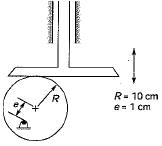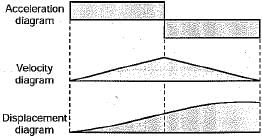Test: Cams - 2 - Mechanical Engineering MCQ
10 Questions MCQ Test - Test: Cams - 2
The angle between the line of stroke (line of motion of the follower) and the normal to the pitch curve at any point, is referred to as
The pressure angle of a cam depends upon
1. lift and type of the follower motion
2. angle of ascent
3. offset between center line
Which of the statements made above are correct?
1. lift and type of the follower motion
2. angle of ascent
3. offset between center line
Which of the statements made above are correct?
Why is an offset provided in a radial cam - translating follower mechanism?
Identify the nature of motion in a cam - roller followers system that leads to lowest jerk
Which of the following motion of cam roller - follower leads to the lowest jerk?
An eccentric circular cam of radius 10 cm as shown below rotates at a constant angular speed of 2 rad/s, The eccentricity is 1 cm. The maximum translational speed of the flat face follower is

In a plate cam mechanism with reciprocating roller follower, the follower has a constant acceleration in the case of




















